Cisco CCNA 172.16.10.0/25
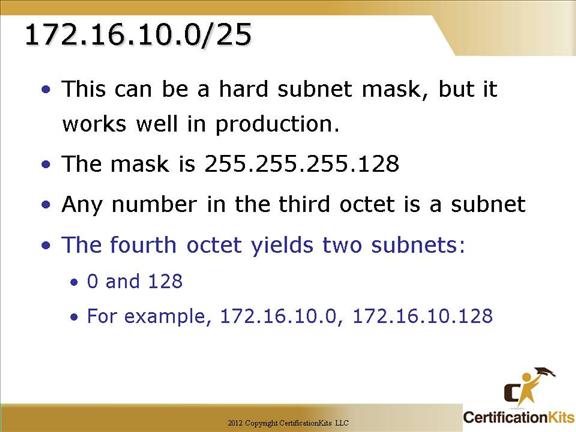
This is actually a really good subnet to use in production because it creates over 500 subnets with 126 hosts for each subnet—a nice mixture. So, don’t skip over it!
Cisco CCNA Subnet Question
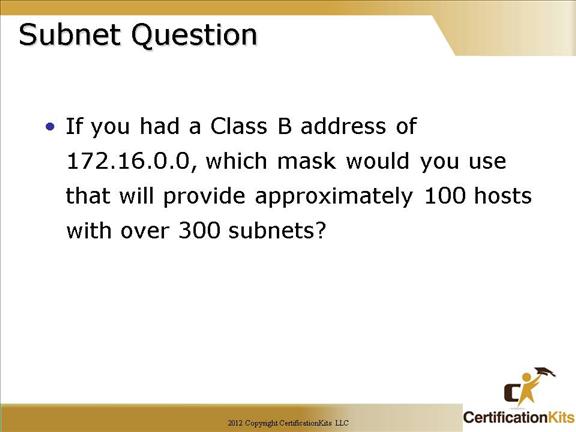
255.255.255.0=256 subnet, 254 hosts
255.255.255.128 =512 subnets, 126 hosts (correct answer)
255.255.255.192=1024 subnets, 62 hosts
Start at 255.255.255.0, which provides 256 subnets, each with 254 hosts.
Then move right if you need more subnets, or left if you need more hosts. In this example, we move right with the subnet bits because we need more subnets.
Cisco CCNA Subnet Question
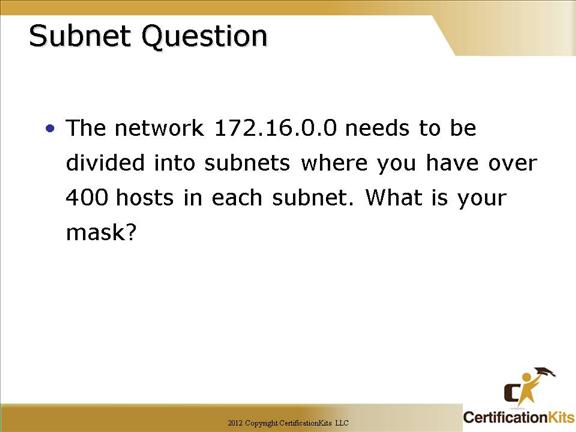
172.16.0.0 with over 400 hosts per subnet.
Start at 255.255.255.0, which provides 256 subnets, each with 254 hosts.
Then move right if you need more subnets, or left if you need more hosts. In this example, we move left with the subnet bits because we need more hosts.
255.255.254.0 = 128 subnets, each with 510 hosts (correct answer)
Cisco CCNA Subnet Question
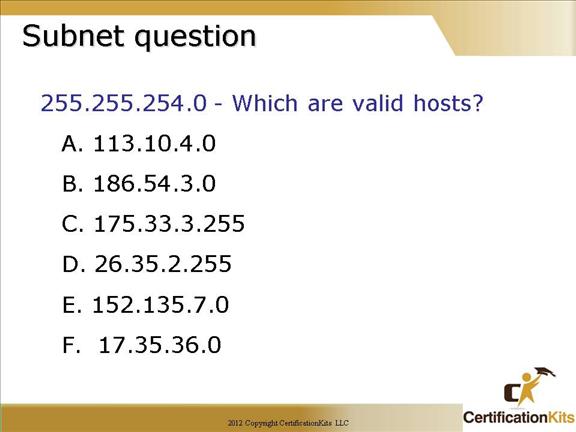
The block size in the third octet is 2. The subnets in the third octet are 0, 2, 4, 6, 8, 10, 12, etc.
A. 113.10.4.0 is a subnet
B. 186.54.3.0 is a valid host
C. 175.33.3.255 is a broadcast address
D. 26.35.2.255 is a valid host
E. 152.135.7.0 is a valid host
F. 17.35.36.0 is a subnet
Cisco CCNA Subnet Question
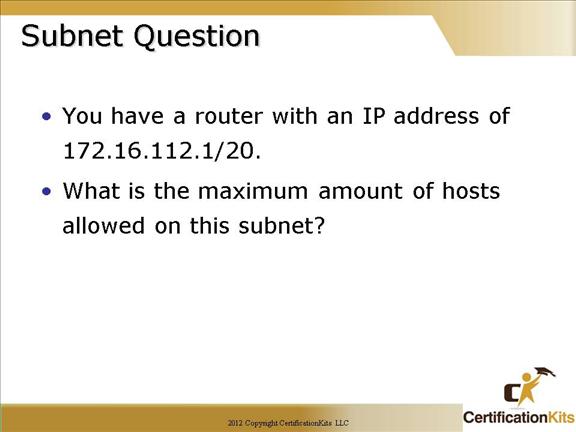
A /20 means the mask is 255.255.240.0. This is 12 host bits. 212-2 = 4094, which is the maximum number of hosts allowed on the subnet.
Cisco CCNA Subnet Question
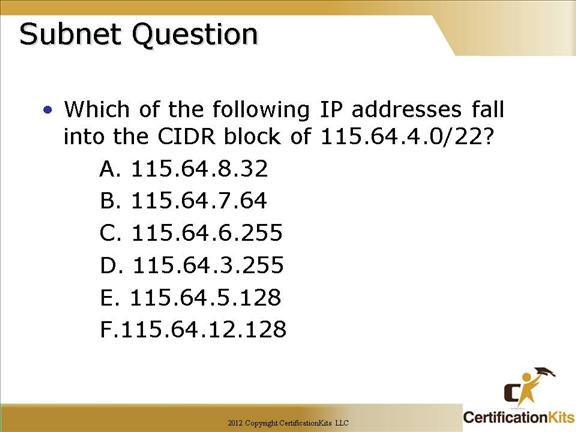
A /22 means the mask is 255.255.252.0. The subnet is 115.64.4.0, the broadcast address is 115.64.7.255
B. 115.64.7.64
C. 115.64.6.255
and
E. 115.64.5.128
are valid host addresses within this subnet.
Cisco CCNA Subnet Question
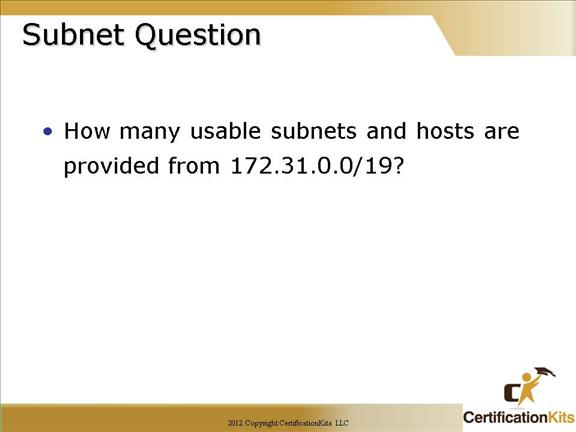
A /19 means the mask is 255.255.224, which is 3 subnet bits and 13 host bits. This provides eight usable subnets, each with 8190 hosts.
Cisco CCNA Private Address Space
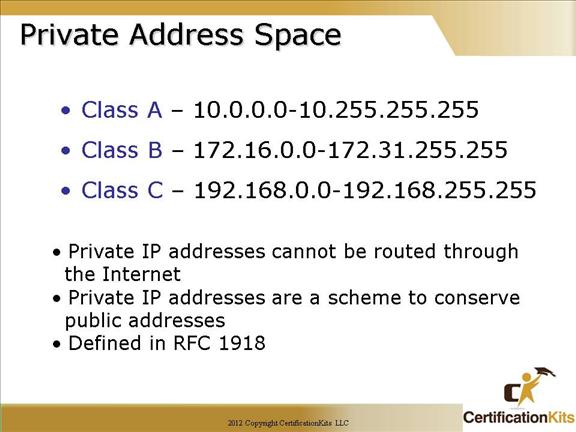
The people who sat around and created the IP addressing scheme also created what we call private IP addresses which are defined in RFC 1918.
These addresses can be used on a private network, but they’re not routable through the Internet. This is designed for the purpose of creating a measure of well-needed security, but it also conveniently saves valuable IP address space.
Again, now shown in binary:
Class A: 00001010
Class B: 10101100.00010000 through 10101100.00011111
Class C: 11000000.10101000
Cisco CCNA Private IP Question
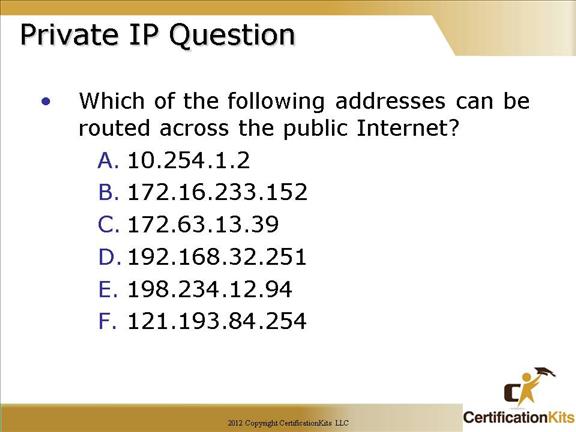
The following addresses can be routed across the public Internet:
C. 172.63.13.39
E. 198.234.12.94
F. 121.193.84.254
The following addresses fall under RFC 1918 and are not routed across the public Internet:
A. 10.254.1.2
B. 172.16.233.152
D. 192.162.32.251
Cisco CCNA Broadcasts
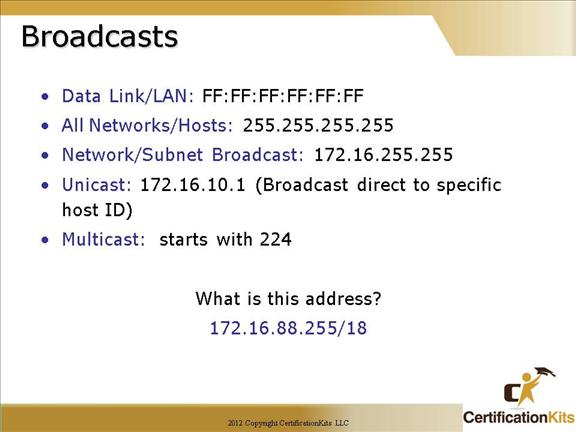
It is important to understand the different terms and uses of broadcast addresses.
There are four different types:
üLayer 2 broadcasts: broadcast that is sent to all nodes on a LAN – MAC address of FF:FF:FF:FF:FF:FF
üBroadcasts (layer 3): broadcast that is sent to all nodes on the network
üUnicast: broadcast sent to a single destination host
üMulticast: broadcast that is sent from a single source and transmitted to many devices (devices that subscribed to the multicast address) on different networks
The address 172.16.88.255/18 can also be written as 172.16.88.255 255.255.192.0 is a host address. Don’t be fooled by the 255 in the last octet. The address would be a broadcast address with a 24 bit mask but not with an 18 bit mask. Valid host range with a 18 bit mask is:
172.16.64.1 – 172.16.127.254
